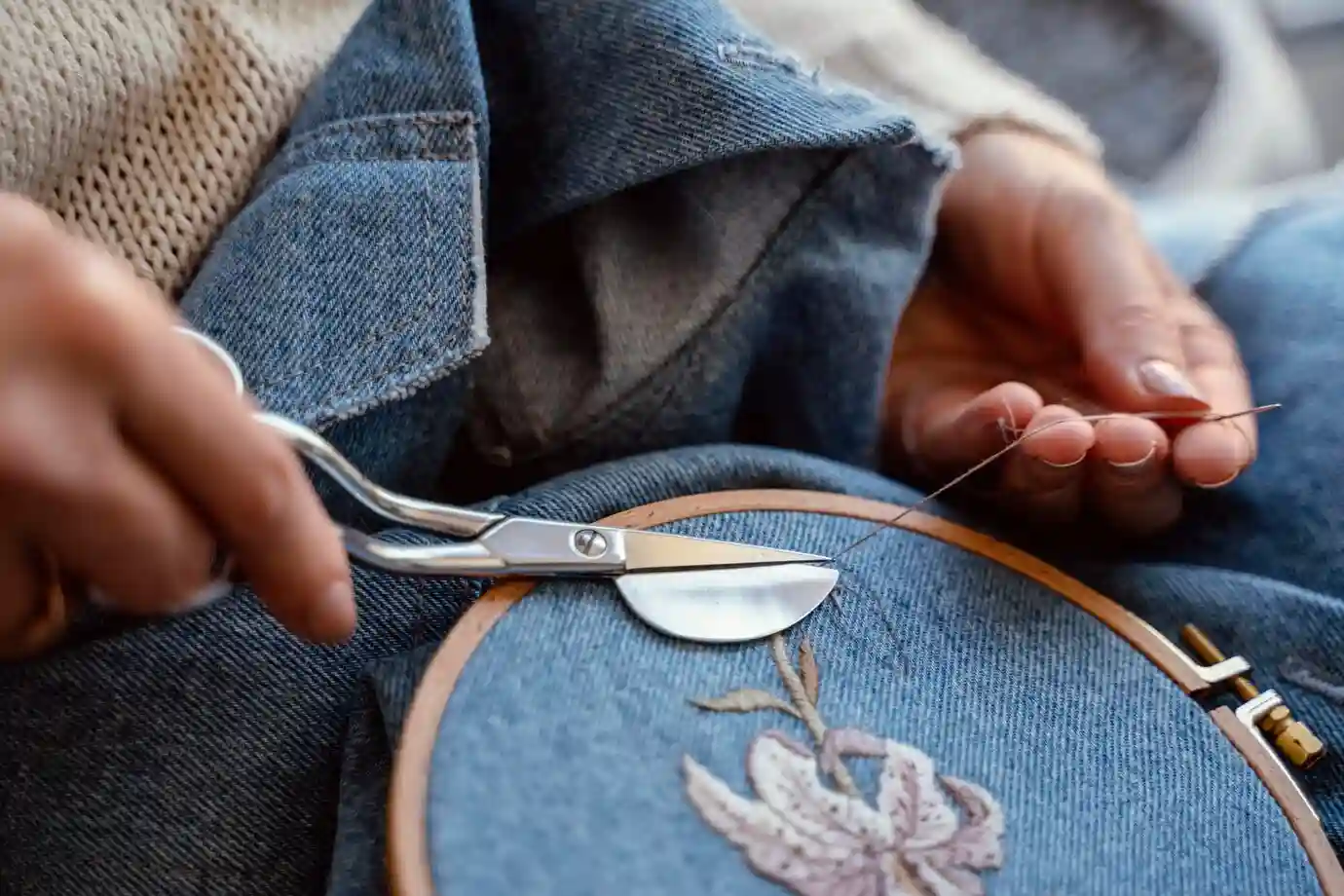Embroidery is a timeless craft that allows individuals to add personal, creative touches to fabric. Whether you want to personalise clothing, create beautiful home décor, or simply enjoy a relaxing hobby, learning the basics of embroidery is the first step towards mastering this art form. This blog discusses some important embroidery methods that are ideal for beginners assisting them in laying a solid foundation for their creative journey into the world of needlework.
- The Basics of Running Stitch
The running stitch is one of the most basic yet versatile stitches in embroidery. It is composed of small, precisely spaced stitches that travel in a straight line making it ideal for outlining forms, creating borders and adding texture. Beginners frequently begin with the running stitch, because it is simple to learn and helps them gain control over the needle and thread. To make a running stitch, simply push the needle in and out of the fabric at regular intervals, ensuring that the stitches are uniform in length. It’s a basic stitch that appears in many embroidery themes.
- Backstitch: Strong and Precise Outlining
The backstitch is a common stitch for making crisp, firm outlines in embroidery patterns. It creates a continuous line by stitching backward along the fabric, which makes it stronger and more precise than the running stitch. This technique is ideal for text, detailed drawings, or any design that requires sharp lines.
For beginners, practising the backstitch improves hand eye coordination and precision. It’s done by bringing the needle up through the fabric, then inserting it one stitch length behind the last stitch and bringing it up one stitch length ahead, creating a seamless line.
- Satin Stitch: Smooth and Solid Filling
When you want to fill an area with colour and texture, the satin stitch is your friend. This technique includes sewing long, straight stitches side by side to completely cover a shape, giving in a smooth, satiny appearance. It’s ideal for filling petals, leaves, and other solid shapes in your embroidery.
While satin stitch requires patience and even tension to prevent the fabric from puckering, it is a rewarding technique that gives your work a polished appearance. Beginners should start with simple forms to learn the proper spacing and tension for a faultless finish.
- French Knots: Adding Texture and Dimension
French knots are little, beautiful knots produced, by looping the thread around the needle and drawing it through the fabric. These knots give beautiful texture and dimension, and are frequently used to represent flower centres, eyes and other small elements.
Though French knots can be challenging for beginners at first, practicing this stitch improves fine motor skills and patience. The key is to keep the thread tension consistent, so that the knot remains neat and secure.
- Chain Stitch: Decorative and Flexible
The chain stitch is a series of looped stitches that resemble a chain. It has both decorative and functional uses in embroidery. This stitch is ideal for outlining, creating patterns and adding texture to bigger areas.
Beginners adore the chain stitch, because it appears complex but is actually pretty simple once you get the hang of it. It entails creating loops on the fabric surface and anchoring them with small stitches, resulting in flowing, curved designs.
- Lazy Daisy Stitch: Perfect for Petals and Leaves
The lazy daisy stitch is a chain stitch variation that is commonly used to make flower petals, and leaf designs. It entails creating a loop attached at the base, resembling a delicate petal. This stitch gives a pleasant, and whimsical touch to flower embroidery patterns. It’s simple for beginners to learn, and ideal for adding quick embellishments to any project. Practicing the lazy daisy stitch also helps to improve needle control and stitch size.
- Stem Stitch: Smooth Lines with a Twist
The stem stitch is renowned for making smooth, curved lines that resemble twisted ropes which are ideal for stems, vines and outlines. It gives a slightly elevated, textured look that enhances the depth of needlework motifs. Beginners may find the stem stitch tough at first but mastering it substantially improves one’s needlework skills. The stitch is formed by gently overlapping stitches and working in a forward motion, resulting in a smooth and graceful line.
Conclusion
Embroidery is a rewarding craft that combines creativity, patience, and skill. For beginners, mastering these fundamental techniques lays a solid foundation for exploring more complex designs. Each stitch has unique textures and effects, allowing you to confidently personalise your products. With practice, these techniques become second nature, leading to a world of beautiful, handcrafted creations. So grab your needle and thread and get stitching—your fabric canvas is waiting!
